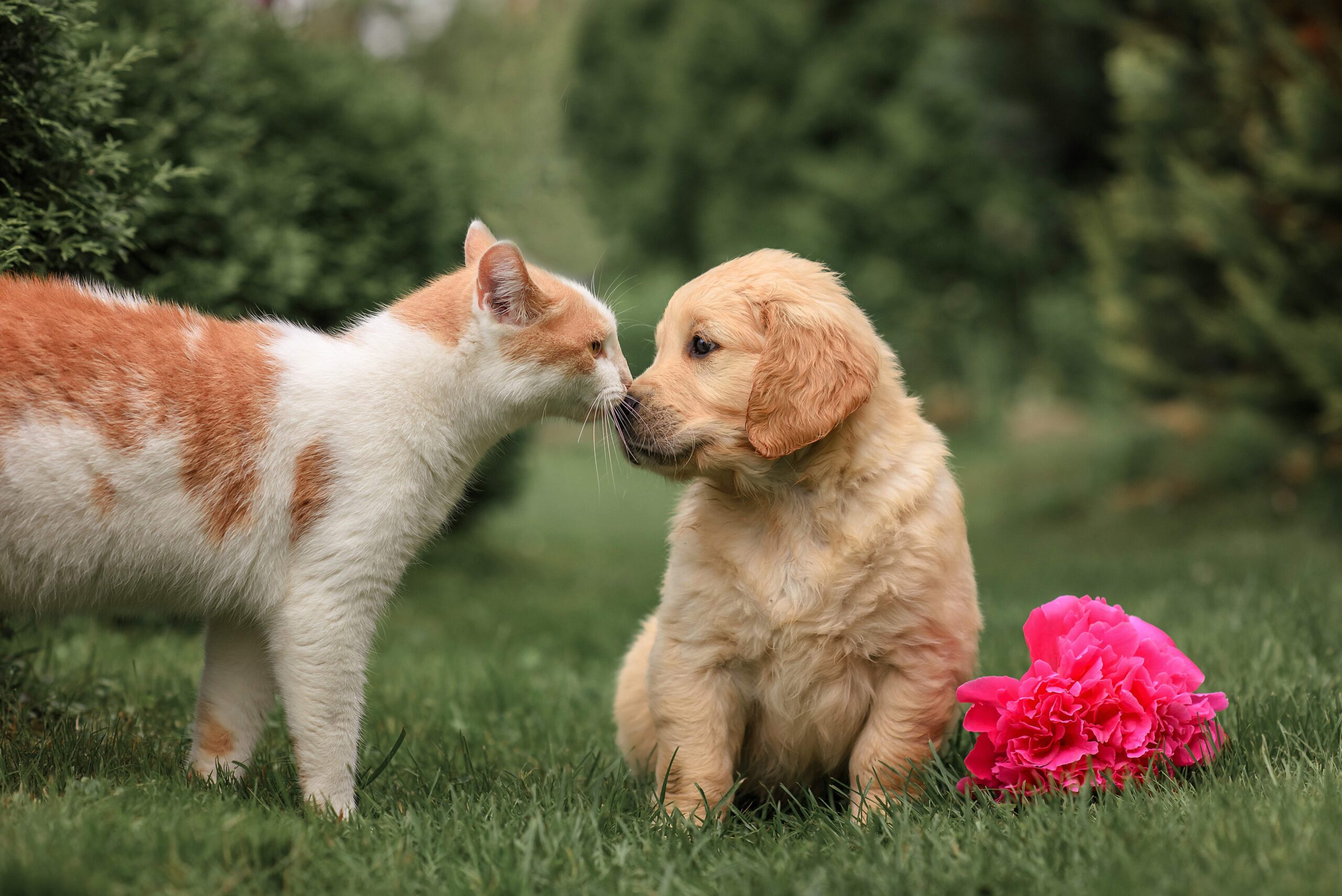Introducing your dog or cat to their new family members in the right way is crucial for building positive relationships and safety for all. Properly socializing your dog or cat to other pets means giving them the skills they need to successfully live together and encourage positive associations.
Dogs and cats are able to live quite happily together, and it’s even beneficial for children to be involved with taking care of a cat or dog. However, dogs and cats have natural instincts and behaviors that need to be managed when interacting with each other— teaching them what to do when they feel overwhelmed, and proactively managing their environment to ensure safety and calm behavior goes a long way in having a harmonious household. It’s up to us to introduce them to other animals in a positive and safe way.
How to Introduce Your Dog to a New Cat
- Find a Good Match
Ask the shelter or rescue which cats have experience with dogs. Look for a dog-savvy cat to adopt, one that is confident but calm. You don’t want to introduce a fearful cat (or a high-energy cat) that might run when around your dog, triggering a dog’s natural instinct to chase. If you’re adopting a dog and you have a cat at home, choose one that has a history of living with cats, or a puppy that can be socialized from a young age to being around a cat. - Provide Separate Safe Areas for Your Dog and Cat
When you first bring your new cat home, make sure they have somewhere to go that the dog isn’t allowed. Keep them separate outside of the times you can provide supervised interaction. - Keep Your Introductions Slow and Positive
Use gates and leashes to give distance when needed. - Reward Calm Behavior
Give a treat any time your dog looks at your new cat and stays calm. If they become too focused or excited, add some distance or try again later. - Connect With a Certified Dog Trainer
They can teach you management techniques and how to read canine body language.
How to Introduce Dogs to Each Other
- Meet and Greet
Before bringing home a new puppy or dog from the shelter, have a meet-and-greet to make sure the two are comfortable around each other. - Manage Age Differences
If you’re introducing a puppy to your dog, make sure your older dog isn’t overwhelmed with puppy energy. Older dogs don’t always appreciate being jumped on by puppies, and your new puppy needs to learn how to be polite. - Provide Safe Spaces
Provide separate areas where each dog can decompress and relax when they need a break or get overexcited. - Keep Them Separated
Keep the dogs separated for as long as needed as they acclimate to sharing their home with a new dog. - Reward Polite and Calm Behavior When Around Each Other
This will build a positive association with their new family member and train good behavior. - Go on Parallel Leashed Walks
Start with each dog at a distance from each other and slowly decrease the distance as long as they stay calm and can respond to simple training cues. Eventually, you’ll be able to walk them next to each other as they’ll be used to the presence of the other dog. - Start With Leashed Interactions Before Letting Them Play off-Leash Together
The leash will give you an easy way to gain control and redirect their attention if need be. - Connect With a Certified Dog Trainer
A certified dog trainer can help you through the introduction process and teach important canine body language signals so you can better understand when a dog is stressed and needs some distance from the other dog. They can also help you set up your home to discourage resource guarding between the dogs.
How to Introduce Your Cat to a New Dog
- Find a Good Match
Ask the shelter or rescue about which dogs have experience with cats. Choose a dog that has a history of living with cats, or a puppy that can be socialized from a young age to being around a cat. - Provide Separate Safe Areas for Your Dog and Cat
When you first bring your new dog home, make sure that both your dog and cat have somewhere they can go away from the other. Keep them separate outside of the times you can provide supervised interaction. - Keep Your Introductions Slow and Positive
Use gates and leashes to give distance when needed. - Treat Calm Behavior
Give a treat any time your cat looks at your new dog and stays calm. - Connect With a Cat Trainer
They can teach you management techniques and how to read feline body language.
